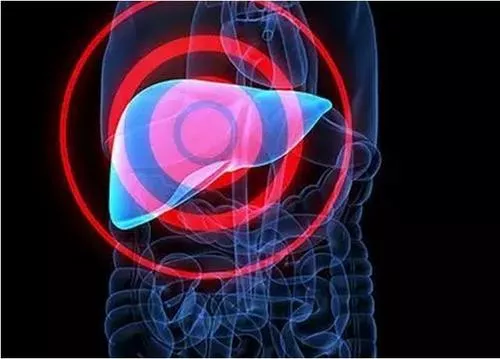Recently, the sporadic acute hepatitis in children with unknown causes in the past showed a trend of concentrated attack. Acute hepatitis in children reported by many countries was first found in Europe, America and other countries, and then appeared in many countries such as Asia. This has aroused the high vigilance of relevant domestic researchers. "Unexplained acute severe hepatitis has great damage to children's liver function."

On May 13, Ning Qin, director of the infection department of Tongji Hospital Affiliated to Tongji Medical College of Huazhong University of science and technology and the National Medical Center for major public health events, told Science and Technology Daily that in addition to the great harm, another important reason for the concern caused by the event is that it will occur intensively in a short time In the past, this unexplained hepatitis in children was sporadic and the number of cases was small, but this time, there are a large number of cases reported in the short term, which may be caused by infectious diseases
However, it is puzzling that if it is an infectious disease, there is no intersection of time and space between children in different countries or regions, and it is theoretically impossible to infect each other, how can it focus on the disease over a period of time?
There are many doubts, and many causes are "wrong"
As of May 3, about 228 cases of unexplained acute hepatitis had been reported in 20 countries and regions around the world, including at least 20 cases of liver transplantation, accounting for about 8.8%, and 4 cases died.
"Children have common characteristics, such as jaundice and elevated aminotransferase indexes." Professor Luo Xiaoping, director of Pediatrics of Tongji Hospital, said that in this case, the hospital will screen viral hepatitis, non hepatophilic virus infection, autoimmune hepatitis, metabolic liver disease and drug-induced infection according to the conventional process, and judge the cause according to the results.
The investigation of unexplained acute hepatitis by who ruled out hepatitis A, B, C, e and other hepatitis virus infections. What is the cause?
Some scholars speculate that it may be autoimmune hepatitis dominated by T cells caused by neocoronal mRNA vaccine However, further investigation found that most children were not vaccinated with neocoronal mRNA vaccine, and the possibility was excluded
Through molecular biological detection, it was found that there was a human adenovirus (HAdV) 41 in the serum samples of some patients. At present, it has become the biggest "suspect".
But the problem is that according to past experience, human adenovirus (HAdV) is not so destructive.
"People have a deep research on human adenovirus, from molecular structure to pathogenicity, to different tissue orientation and different toxicity." Ning Qin said that human adenovirus mostly invades the respiratory tract, and a few cause gastroenteritis and conjunctivitis, leading to liver failure is extremely rare**
This is like a rabbit eating grass, because there are many dead mosquitoes and flies around. It can't be said that it has changed to eat insects.
Infection with a new variant of novel coronavirus may be one of the reasons
At present, the industry believes that in addition to human adenovirus (HAdV) infection, there are other possibilities, such as the unidentified new hepatotropic virus, a new variant of HAdV, drug, toxin or environmental exposure and other factors... some analysts believe that the new variant infected with a novel coronavirus is also considered one of the possibilities**
"Although some cases are positive for novel coronavirus and / or HAdV, genetic identification of the virus is still needed to determine the correlation between the two." Ning Qin said that whether it is a new virus needs further in-depth research.
In addition, it may be that during the new coronavirus epidemic, the increased susceptibility of children may lead to the increased pathogenicity of the virus. The blood, serum, urine, feces, respiratory tract samples and even liver biopsy samples of children should be tested.
"In fact, there is no definite cause of hepatitis in all countries. In fact, it is not the same cause." Ning Qin said that at present, there is no evidence that the cases occurred everywhere are caused by the same cause. Therefore, international exchanges and cooperation should be strengthened, such as sharing gene sequencing results in the international academic community, so as to solve the puzzle earlier.
Relevant cases have not been found in China, but we need to be vigilant
Similar cases have not been found and reported in China, but due to their great harm and possible infectious diseases, we need to be vigilant.
The article "paying close attention to the characteristics and development trend of severe acute hepatitis in children with unknown causes in many countries around the world" published by the infection department and pediatric team of Tongji Hospital in Chinese medical journal emphasizes the above views.
"Rapid and accurate identification of the cause is the basis for the diagnosis and treatment of new infectious diseases and epidemic prevention and control. The basis for rapid identification of the cause is rapid discovery." The article calls on doctors in pediatrics, infectious diseases departments and related departments to be highly vigilant against children and adults with unexplained liver dysfunction, and carefully ask about the contact history and novel coronavirus infection history when receiving patients.
At present, there are many pathogen identification technologies, such as metagenome sequencing technology, antigen-based antibody reaction, biosensor and other technologies, which can realize rapid locking of pathogens.
Ning Qin reminded that patients with unexplained acute hepatitis who have excluded common pathogens should actively carry out metagenome sequencing, and medical units should leave blood or other body fluid samples with the consent of patients for further identification of pathogens. Once a case is found, it should be actively reported to the disease control department.